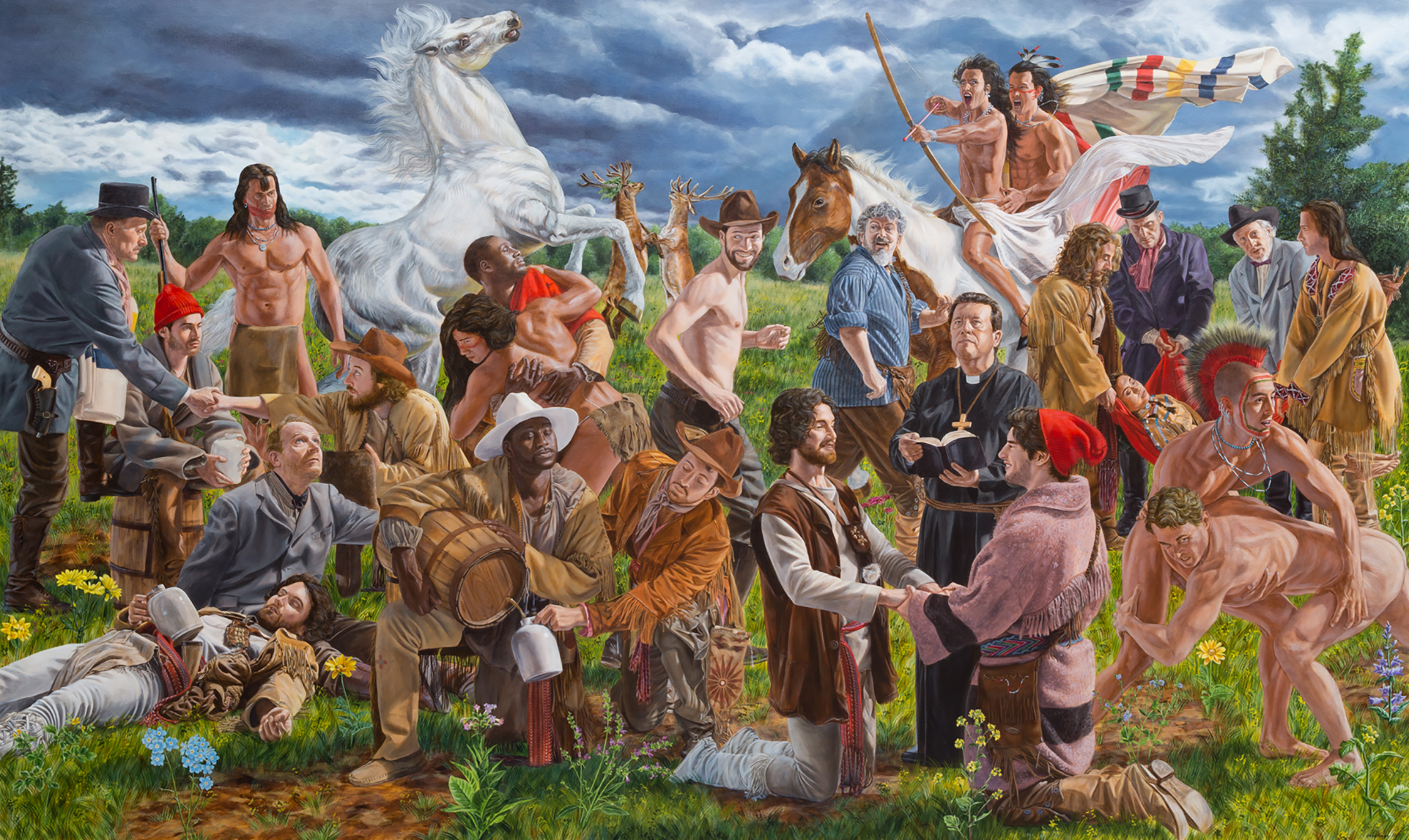Painter Christina Quarles is Blurring Boundaries

American painter Christina Quarles is blurring the boundaries between gender, sex, and race.
Cover photo: Bad Air/Yer Grievances, (presumably) acrylic on canvas, by Christina Quarles (2018). Via Interview Magazine.
This article is part of my 30 Living Queer Artists Worth Celebrating in 2019 series. June is Pride Month, commemorating the international gay rights movement that began June 28th, 1969, with the Stonewall riots of New York. 2019 marks the 50th anniversary of the event. I’m celebrating all month long!
WARNING: The following article features and/or discusses graphic nudity and homoeroticism.
Christina Quarles
Los Angeles based Christina Quarles paints amorphous gestural figures, in abstract settings. The erotic images capture women in intimate positions. The nude characters — often but not always — appear in visions of ecstasy, with busy hands, twisted limbs, and open mouths.
Quarles’ paintings are nearly indecipherable. The canvases include floating hands and odd amounts of legs. “I tend to paint boobs a lot,” Quarles laughs. The number of figures is impossible to determine. This dynamism adds an intense sense of motion.
Quarles’ art functions in a variety of traditions. The ambiguity of time and space draws from cubism and the gestural automatism and abstraction pulls from surrealism. The acidic hues are reminiscent of psychedelia. Quarles brilliantly combines all these aesthetics with a contemporary view of the human body.
Identity & Boundary
When Christina Quarles was born in Chicago in 1985 to a mixed-race family, her parents could only assign her one race on her birth certificate. The idea of demarcation has followed Quarles throughout her life. She says, “As a Queer, cis-woman, born to a black father and a white mother, I engage with the world from a position that is multiply situated.”
“My experience with race was really more of a gateway into a larger understanding of these boundaries and how they could be applied to different aspects of life,” Quarles explains.
She writes, “Fixed categories of identity can be used to marginalize but, paradoxically, can be used by the marginalized to gain visibility and political power. This paradox is the central focus of my practice.” Quarles’ art asks the viewer, “is identity important?” and “who determines identity?”
Ambiguity
As androgyny becomes more popular, it’s likely that American culture will continue to blur the societal boundaries of male and female. In this regard, Quarles is reminiscent of gender-fluid artist Nicole Eisenman. Of course, as a mixed-race artist, Quarles is also challenging the ideas of black versus white. Many of her characters are painted in grey tones. Quarles’ work is ultimately a statement about prejudice.
Canvas as Body
Historically, art has been a representation of the powerful, painted by male artists for wealthy nobles, kings, and popes. Art has become increasingly democratized over the last few centuries. The art world now reflects different types of artists and ideas. Quarles investigates the similarities between the corporeality of the body and the canvas, which — at least in Western society — have long favored white men.
A New Era
Museum and gallery curators — prompted by the public at large — have finally developed an interest in representing a diverse array of artists, including those who are challenging traditional notions of sex, identity, and the human body.
In March of this year, Quarles was awarded $50,000 as part of the inaugural Pérez Prize established by Miami collectors Darlene and Jorge M. Pérez. There has certainly been a shift in the art world in just the last ten years. I’m certainly excited to see where artists will lead us. To keep up with Christina Quarles, follow her on Instagram.











